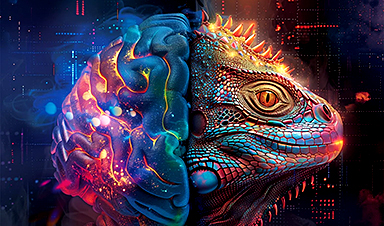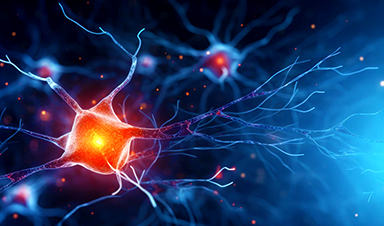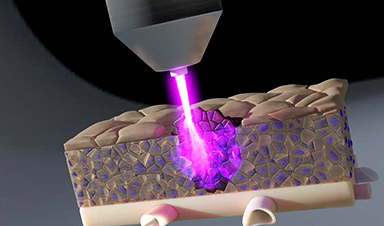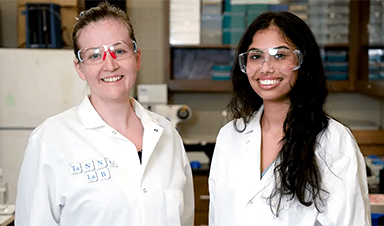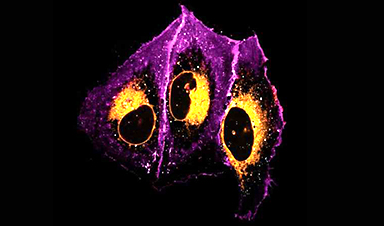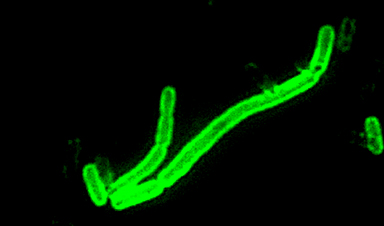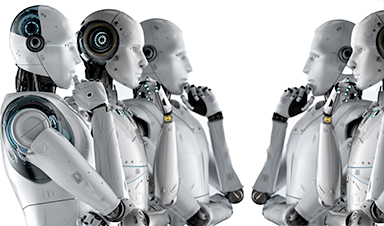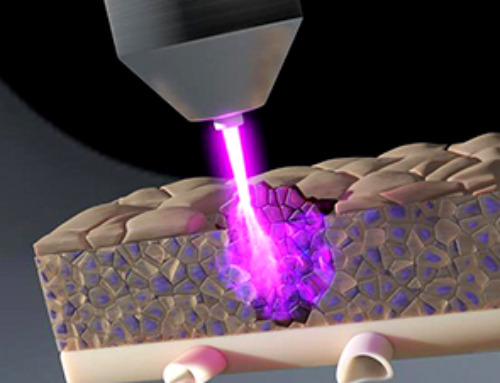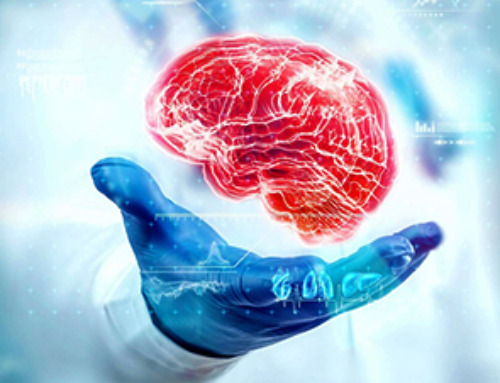New research by Northwestern Medicine reveals how humans have evolved advanced brain regions to interpret others’ thoughts, connecting these areas with the amygdala, a part of the brain involved in emotional processing.
- Study sought to better understand how humans evolved to become skilled at thinking about others.
- Newer parts of the brain that support social interactions are connected to and in constant communication with the ancient amygdala.
- First study to map with fMRI never-before-seen details of the brain’s social cognitive network.
- Findings have implications for one day treating psychiatric conditions such as anxiety and depression.
Advanced Brain Imaging Reveals Keys to Social Interaction
We’ve all experienced it: leaving a party only to be swamped by intrusive thoughts about what others might have been thinking. “Did I talk too much?” “Was my joke offensive?” “Did they enjoy themselves?”
A new study by Northwestern Medicine explores how humans evolved to excel at understanding the thoughts and feelings of others. These insights could eventually lead to new approaches for treating psychiatric conditions like anxiety and depression.
“We spend a lot of time wondering, ‘What is that person feeling, thinking? Did I say something to upset them?’” said senior author Rodrigo Braga. “The parts of the brain that allow us to do this are in regions of the human brain that have expanded recently in our evolution, and that implies that it’s a recently developed process. In essence, you’re putting yourself in someone else’s mind and making inferences about what that person is thinking when you cannot really know.”

Evolution of Social Cognition
The study found the more recently evolved and advanced parts of the human brain that support social interactions — called the social cognitive network — are connected to and in constant communication with an ancient part of the brain called the amygdala.
Often referred to as our “lizard brain,” the amygdala typically is associated with detecting threats and processing fear. A classic example of the amygdala in action is someone’s physiological and emotional response to seeing a snake: startled body, racing heart, sweaty palms. But the amygdala also does other things, Braga said.
“For instance, the amygdala is responsible for social behaviors like parenting, mating, aggression and the navigation of social-dominance hierarchies,” said Braga, an assistant professor of neurology at Northwestern University Feinberg School of Medicine. “Previous studies have found co-activation of the amygdala and social cognitive network, but our study is novel because it shows the communication is always happening.”
The study was published on November 22 in the journal Science Advances.
Advanced Imaging Techniques Reveal Insights
Within the amygdala, there’s a specific part called the medial nucleus that is very important for social behaviors. This study was the first to show the amygdala’s medial nucleus is connected to newly evolved social cognitive network regions, which are involved in thinking about other people. This link to the amygdala helps shape the function of the social cognitive network by giving it access to the amygdala’s role in processing emotionally important content.
This was only possible because of functional magnetic resonance imaging (fMRI), a noninvasive brain-imaging technique that measures brain activity by detecting changes in blood oxygen levels. A collaborator at the University of Minnesota and co-author on the study, Kendrick Kay, provided Braga and co-corresponding author Donnisa Edmonds with fMRI data from six study participants’ brains, as part of the Natural Scenes Dataset (NSD).

These high-resolution scans enabled the scientists to see details of the social cognitive network that had never been detected on lower-resolution brain scans. What’s more, they were able to replicate the findings up to two times in each individual.
“One of the most exciting things is we were able to identify network regions we weren’t able to see before,” said Edmonds, a neuroscience Ph.D. candidate in Braga’s lab at Northwestern. “That’s something that had been underappreciated before our study, and we were able to get at that because we had such high-resolution data.”

Potential Treatment of Anxiety and Depression
Both anxiety and depression involve amygdala hyperactivity, which can contribute to excessive emotional responses and impaired emotional regulation, Edmonds said. Currently, someone with either condition could receive deep brain stimulation for treatment, but since the amygdala is located deep within the brain, directly behind the eyes, it means having an invasive, surgical procedure. Now, with this study’s findings, a much less-invasive procedure, transcranial magnetic stimulation (TMS), might be able to use knowledge about this brain connection to improve treatment, the authors said.
“Through this knowledge that the amygdala is connected to other brain regions — potentially some that are closer to the skull, which is an easier region to target — that means people who do TMS could target the amygdala instead by targeting these other regions,” Edmonds said.
Reference: “The human social cognitive network contains multiple regions within the amygdala” by Donnisa Edmonds, Joseph J. Salvo, Nathan Anderson, Maya Lakshman, Qiaohan Yang, Kendrick Kay, Christina Zelano and Rodrigo M. Braga, 22 November 2024, Science Advances.
DOI: 10.1126/sciadv.adp0453
Other Northwestern co-authors include Christina Zelano, Joseph J. Salvo, Nathan Anderson, Maya Lakshman and Qiaohan Yang.
News
Overworked Brain Cells May Hold the Key to Parkinson’s
Scientists at Gladstone Institutes uncovered a surprising reason why dopamine-producing neurons, crucial for smooth body movements, die in Parkinson’s disease. In mice, when these neurons were kept overactive for weeks, they began to falter, [...]
Old tires find new life: Rubber particles strengthen superhydrophobic coatings against corrosion
Development of highly robust superhydrophobic anti-corrosion coating using recycled tire rubber particles. Superhydrophobic materials offer a strategy for developing marine anti-corrosion materials due to their low solid-liquid contact area and low surface energy. However, [...]
This implant could soon allow you to read minds
Mind reading: Long a science fiction fantasy, today an increasingly concrete scientific goal. Researchers at Stanford University have succeeded in decoding internal language in real time thanks to a brain implant and artificial intelligence. [...]
A New Weapon Against Cancer: Cold Plasma Destroys Hidden Tumor Cells
Cold plasma penetrates deep into tumors and attacks cancer cells. Short-lived molecules were identified as key drivers. Scientists at the Leibniz Institute for Plasma Science and Technology (INP), working with colleagues from Greifswald University Hospital and [...]
This Common Sleep Aid May Also Protect Your Brain From Alzheimer’s
Lemborexant and similar sleep medications show potential for treating tau-related disorders, including Alzheimer’s disease. New research from Washington University School of Medicine in St. Louis shows that a commonly used sleep medication can restore normal sleep patterns and [...]
Sugar-Coated Nanoparticles Boost Cancer Drug Efficacy
A team of researchers at the University of Mississippi has discovered that coating cancer treatment carrying nanoparticles in a sugar-like material increases their treatment efficacy. They reported their findings in Advanced Healthcare Materials. Over a tenth of breast [...]
Nanoparticle-Based Vaccine Shows Promise in Fighting Cancer
In a study published in OncoImmunology, researchers from the German Cancer Research Center and Heidelberg University have created a therapeutic vaccine that mobilizes the immune system to target cancer cells. The researchers demonstrated that virus peptides combined [...]
Quantitative imaging method reveals how cells rapidly sort and transport lipids
Lipids are difficult to detect with light microscopy. Using a new chemical labeling strategy, a Dresden-based team led by André Nadler at the Max Planck Institute of Molecular Cell Biology and Genetics (MPI-CBG) and [...]
Ancient DNA reveals cause of world’s first recorded pandemic
Scientists have confirmed that the Justinian Plague, the world’s first recorded pandemic, was caused by Yersinia pestis, the same bacterium behind the Black Death. Dating back some 1,500 years and long described in historical texts but [...]
“AI Is Not Intelligent at All” – Expert Warns of Worldwide Threat to Human Dignity
Opaque AI systems risk undermining human rights and dignity. Global cooperation is needed to ensure protection. The rise of artificial intelligence (AI) has changed how people interact, but it also poses a global risk to human [...]
Nanomotors: Where Are They Now?
First introduced in 2004, nanomotors have steadily advanced from a scientific curiosity to a practical technology with wide-ranging applications. This article explores the key developments, recent innovations, and major uses of nanomotors today. A [...]
Study Finds 95% of Tested Beers Contain Toxic “Forever Chemicals”
Researchers found PFAS in 95% of tested beers, with the highest levels linked to contaminated local water sources. Per- and polyfluoroalkyl substances (PFAS), better known as forever chemicals, are gaining notoriety for their ability [...]
Long COVID Symptoms Are Closer To A Stroke Or Parkinson’s Disease Than Fatigue
When most people get sick with COVID-19 today, they think of it as a brief illness, similar to a cold. However, for a large number of people, the illness doesn't end there. The World [...]
The world’s first AI Hospital, developed in China is transforming healthcare
Artificial Intelligence and its developments have had a revolutionary impact on society, and healthcare is not an exception. China has made massive strides in AI integrated healthcare, and continues to do so as AI [...]
Scientists Rewire Immune Cells To Supercharge Cancer-Fighting Power
Blocking a single protein boosts T cell metabolism and tumor-fighting strength. The discovery could lead to next-generation cancer immunotherapies. Scientists have identified a strategy to greatly enhance the cancer-fighting abilities of the immune system’s [...]
Scientists Discover 20 Percent of Human DNA Comes from a Mysterious Ancestor
Humans carry a complex genetic history that continues to reveal surprises. Scientists have found that 20% of our DNA may come from a mysterious ancestor, according to WP Tech. This discovery changes how we understand [...]
